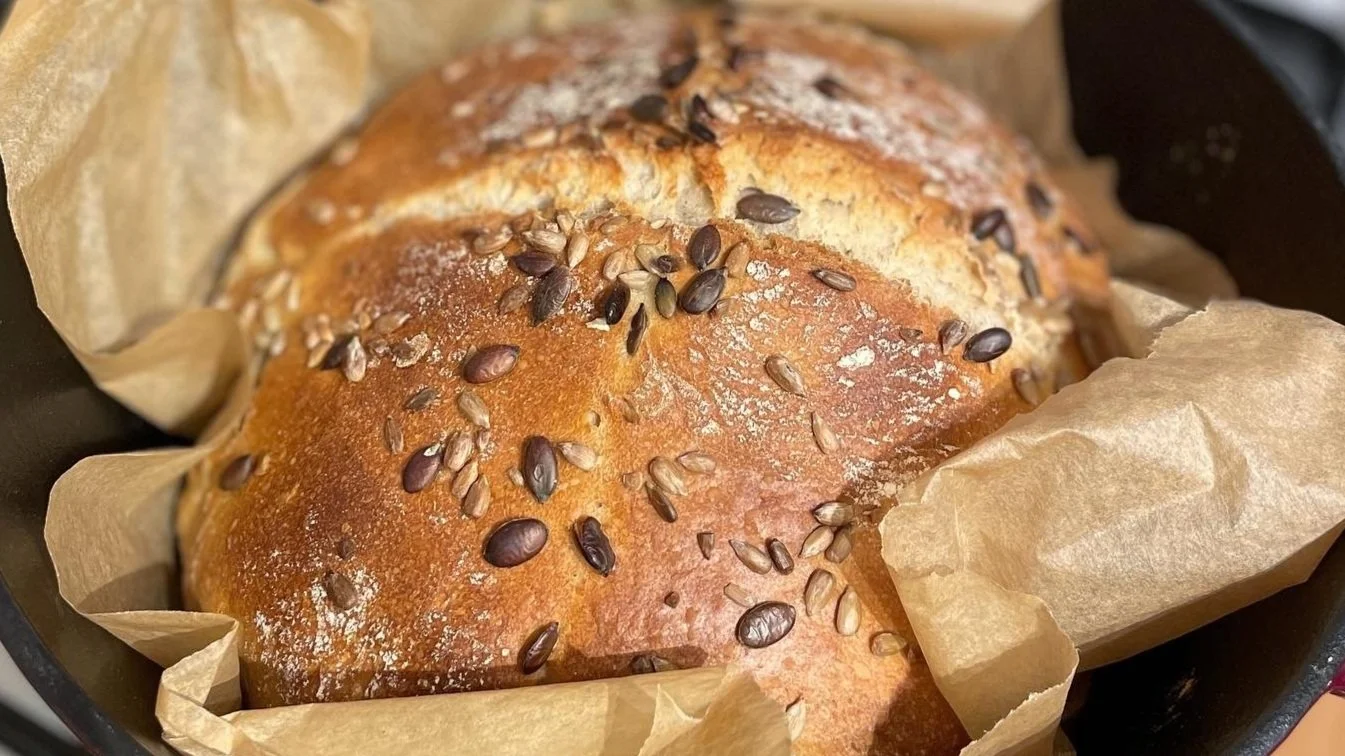‘Is It Done Yet?’ Food Temperatures
I kept finding myself going back to Google constantly to remind myself about what temperature different foods needed to reach to be considered done. So I put them together here as a quick guide - for myself and for you!
What is safe and what is preferred
Would you like to listen to the podcast version instead of reading this article? Find it here!
Whether you're searing a steak or baking a loaf of bread, understanding the temperatures at which these foods are done is in some cases crucial for your health, and in other instances just very helpful to avoid disappointment. Let's unveil the secrets behind the numbers:
Correct Internal Cooking Temperatures - When Is It Done?
1. Beef:
Preferences with beef vary widely, some love the succulent juiciness of rare steak and others prefer the texture of well-done beef. So here you have a few options, but you have to keep in mind that a steak served on the more rare (rarer?) side needs to be quality meat and handled properly. Maybe safest to leave this one to the expert chefs, if you are at all in doubt. You can have a lovely steak at home that is still juicy if seared well (cooked at high temperature at the beginning to “seal” the fats inside so it doesn’t go dry).
- Rare: 50-55°C (120-130°F)
- Medium Rare: 55-60°C (130-140°F)
- Medium: 60-65°C (140-150°F)
- Medium Well: 65-70°C (150-160°F)
- Well Done: 70°C (160°F) and above
2. Pork:
Pork should be cooked thoroughly to kill any harmful bacteria, but of course, overcooking can lead to dryness. Aim for a blush of pink in the centre, unless you don’t mind it a bit drier, of course!
- Medium: 63°C (145°F)
- Well Done: 71°C (160°F)
3. Fish:
Fish varies a bit, but here is the general rule:
- Cook until flesh is opaque and easily flakes with a fork.
- Fish is generally done around 60-65°C (140-150°F), varying slightly depending on the type and thickness of the fish.
4. Chicken and Turkey:
- Whole Chicken: 74°C (165°F)
- Chicken Breasts: 68-74°C (155-165°F)
- Chicken Thighs and Wings: 74°C (165°F)
- Whole Turkey: 74°C (165°F)
- Turkey Breast: 68-74°C (155-165°F)
- Turkey Thighs and Wings: 74°C (165°F)
Personally I always stay over 74ºC (165ºF) for all poultry and I don’t find that this rule gets in the way of any juiciness - it’s still not at all dry at that temperature, in my opinion!
6. Bread:
- Soft Bread: 88-99°C (190-210°F)
- Crusty Bread: 96-104°C (205-220°F)
- Quick Breads (e.g., banana bread): 88°C (190°F)
- When I was doing a lot of sourdough, I learned that the perfect inner temp for a loaf was 96-98ºC, which I found to be a great guide for those!
Mastering internal cooking temperatures will help you feel confident in what you’re serving up. Whether you're a novice in the kitchen or an experienced home cook, understanding these temperatures will make things a lot easier!
How do you test the temperatures?
A thermometer, normally called a meat thermometer (though it doesn’t have to be used just on meat of course!), is one of the most helpful tools you can get in the kitchen. There are super smart ones that cost a lot and come with things like a complimentary smartphone app, but honestly - a simple one for £10-£20 (or your country’s equivalent) normally does it. There are old school ones that you can stick in the meat and keep in the oven (like in a whole chicken), and others that you can just stick in to test when you take the food out. Remember to clean your meat thermometer thoroughly after each use!
An important note: temperatures are a bit of trial and error and experience in the kitchen. What I mean is that a lot of food continues to rise in temperature after they’re taken out of the oven (resting, or “carryover cooking”), so this is another thing to take into account when you want something at the right temperature. But don’t get too bogged down in these details and instead just get cooking and learn by doing!
Did I miss anything or do you have useful tips to add when it comes to food doneness? Email me at liv@thefromscratchbody.com
